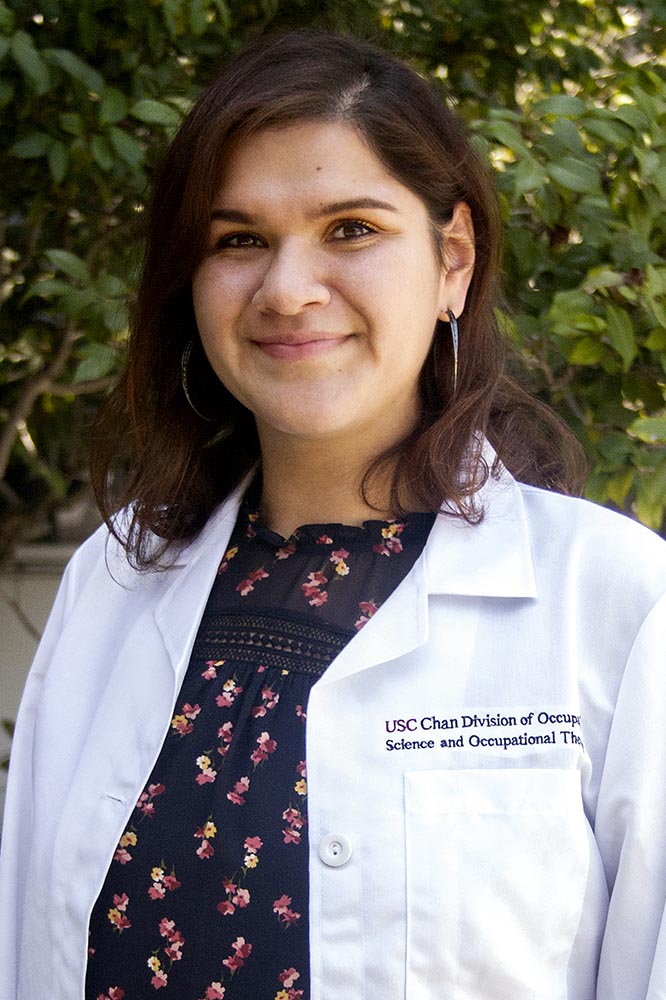Who are the people in your neighborhood? Meet Viviana Padilla ’16, MA ’19
August 23, 2017
The first-generation college student’s journey from a South Los Angeles elementary school to the 2017 White Coat Ceremony
Academics and Courses Chan in the Media Community and Partners Events Students
Viviana Padilla ’16, MA ’19, whose latest Trojan affiliation is as a new USC Chan graduate student/Photo by Hong Le
Most of the USC Chan Division of Occupational Science and Occupational Therapy’s new grad students are adults when they first set foot on campus. Viviana Padilla ’16, MA ’19, on the other hand, has been coming to USC for nearly a decade.
“USC was always there,” says Padilla, a South Los Angeles native who, alongside all Chan students starting new educational programs, will receive her white coat — a symbol of the ethical obligations associated with being a health professional — during Friday’s White Coat Ceremony.
Beginning as a sixth grader at Foshay Learning Center, a K-12 school located one mile west of USC’s University Park Campus, Padilla enrolled in the USC Neighborhood Academic Initiative. NAI is a pre-college enrichment program that partners with area schools like Foshay to prepare students for future admission to higher education institutions. NAI’s successes, now more than 20 years in the making, were recently chronicled in a New York Times article.
Make no doubt about it, NAI demands much from its enrollees. Its requirements include six years of summer schooling, rigorous tutoring, parent–teacher counselling and, during every weekday morning throughout high school, attending classes hosted in buildings on USC’s campus.
But to first-generation college students like Padilla, the long-term impact on NAI participants — educational and otherwise — is obvious. Padilla was admitted to USC in 2012, where she later discovered occupational therapy as an undergraduate student in a class taught by assistant clinical professor Kate Crowley.
“In Kate’s class we read the book How Children Succeed,” Padilla recalls, “and there was a parallel with NAI and how that worked.”
The book posits that academic performance is not merely a function of socioeconomic status or intelligence but of the character, curiosity and stick-to-itiveness cultivated within children and young adults.
Padilla went on to complete the division’s minor in occupational science which she earned in 2016 along with a bachelor’s degree in psychology. She spent the past year as a classroom aide at Villa Esperanza Services, a special education school in South Pasadena, working one-on-one with a teenager who has a developmental disability. After learning more about occupational therapy by visiting health promotion conferences and shadowing practicing clinicians, she knew it was the right career for her.
In June, she and 138 of her classmates began the USC Chan Division’s two-year master’s degree program in occupational therapy. At Friday’s White Coat Ceremony, they will gather with families, significant others and friends to officially commemorate their entry into occupational therapy.
For Padilla, it will be just another highlight in an educational life that has been intertwined with the university.
“I definitely would not be here without USC.”
⋯






